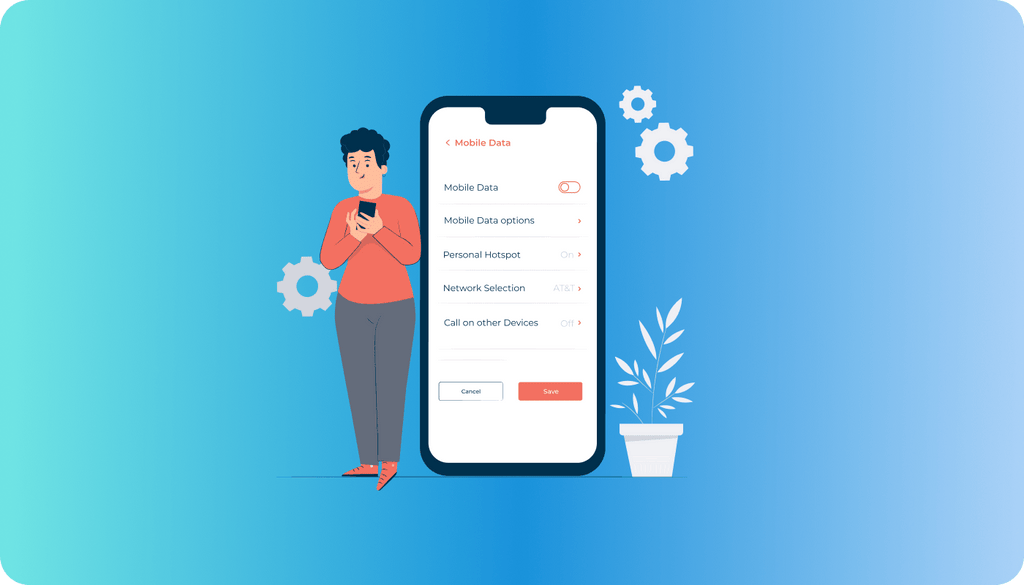PAYG vs SIM-only vs Pay Monthly – How to Choose a Phone Plan
We keep our smartphones always in handy when we are at home or go outside. We are more reliant on our mobile devices than ever before. Aside from choosing the right types of phones that would meet our needs, picking the right tariff is vital for each of us.
There is a wide variety of cellular providers, with each and every of them offering different terms of using their services. We know it’s always a bit confusing with SIM-only, pay-monthly and pay as you go (PAYG) plans. If you find yourself lost comparing and weighing up different mobile deals, we are ready to help you with the decision-making.
SIM-Only vs PAYG
If you already have a mobile phone and don’t want to change it in the near future, pay as you go and SIM-only deals will be your best option. In both cases, you get a low-cost SIM card that you need to top up when you need to use cellular services. With pay as you go plans, you need to buy a certain refill amount whenever you spend your balance. You can do it online, in the personal account of your cellular provider, using the suggested payment methods, etc.
With a PAYG deal, you buy credits in advance and use the service for as long as you have credits on your balance. If you run out of data, you can set up the Auto-Refill option that automatically adds data to your balance when it falls below a certain amount.
Some mobile providers also offer bundles of data, texts and minutes if you top up your credit by a certain amount each month, something which can offer better value for money. Overall, however, this type of deal is best suited to those who don’t use their phone too often or don't consume much data.
Pros of PAYG Deals
- Pay only for the data and services you use;
- PAYG plans are the best choice for those people who use their phones infrequently;
- You are not tied into contract.
Cons of PAYG Deals
- You won’t be able to use your phone when you run out of credit;
- PAYG deals don’t come with a handset. In case yours breaks, you need to pay for the repairs required.
With a SIM-only plan, you pay a certain monthly amount for data, calls, and texts. A SIM-only plan is more flexible than pay-monthly contracts. Such a plan can last for as short as 30 days and you can decide if you want to stick with it for longer or move on and look for other alternatives. Such deals are the best choice for those users who are happy with their smartphones and do not want to upgrade.
A SIM-only plan also makes it easy for you to upgrade your mobile phone. An average mobile phone contract lasts for 2 years. It’s a lot for the rapidly changing world. In that time, dozens of new smartphones are released by the world’s known brands. So, you can buy a new handset whenever you want.
As a rule, SIM-only deals are much cheaper than pay-monthly contracts because you do not need to pay back your telco for the cost of your handset.
With a SIM-only deal, you get a monthly allowance of calls, texts, and data for a fixed price. At the same time, you don’t get tied down with a long-lasting contract. With the auto-refill options enabled, you don’t have the hassle of having to top up your balance as your plan automatically renews every month. On a SIM-only plan, you can change anything about your plan on a monthly basis. If you move overseas for work or studies, just cancel your plan at the end of the month.
Pros of a SIM-only Plan
- It’s an easy way to save money on connectivity;
- There’s no need to lock into a contract;
- Keep using your existing smartphone or upgrade anytime.
Cons of a SIM-only Plan
- If your phone stops working it’s up to you to get it repaired or replaced;
- Your handset should be unlocked to use a SIM-only plan.
What Is a Pay Monthly Plan?
Opting for a pay-monthly plan, you get a package that includes a new handset along with a set amount of minutes, texts, and data for a fixed monthly price. As a rule, you can choose between a 12-month, 18-month or 24-month contract. Longer contracts are cheaper. However, shorter contacts offer more flexibility to users. When you decide to get out of your contract early, you should be ready for high penalty fees. They are often equal to the amount that you would pay if your contract continued. For example, if you paid $30 per month when you were on contract and decided to leave your contract with 10 months still to run, you’d need to pay a $300 penalty fee.
A pay-monthly contract makes getting a brand new smartphone cheaper than buying it outright. Since the latest smartphones cost $1,000 and more, mobile phone networks make them more affordable by including handsets in the price of their plans. It lets you spread the cost out for over 1-2 years.
Pros of pay-monthly plans
- You get a brand-new handset;
- If your phone develops a fault, you may be entitled to a free repair or replacement under your contract;
- With your bills paid on time, a monthly contract can help to improve your credit rating.
Cons of pay-monthly plans
- You’ll be tied in for at least a year, potentially two, and termination fees can be expensive if you need to leave early;
- Fees can also be high for going over your monthly allowance.
Dual SIM
If you cannot decide what mobile plan will be a better option for you or you live in the area with poor signal and need a reliable backup cellular service that will keep you connected anytime, anywhere, then using a dual-SIM smartphone can be beneficial to you. Such devices can also be useful to those who travel frequently. You can leave your local SIM card in one slot of your handset and add another SIM that you will use in the country that you visit. You can also use a dual-SIM device for both business and personal matters.
Recently, we have seen a growing number of eSIM-compatible smartphones from the world-known brands being released in the market. It’s a great alternative to using a dual-SIM handset with two physical SIM cards. The eSIM technology is supported by the latest models of iOS and Android devices, making it easy for you to combine using a physical SIM card on any chosen mobile plan with an eSIM. Either way, dual SIM is an option.
Final Words
Now you know the difference between PAYG, SIM-only and pay-monthly mobile plans. You’re well on the way to making the right choice of a plan that will meet your personal needs and expectations. When deciding on the best mobile plan, it’s vital to mind the money factor, flexibility, and convenience.
Here at Keepgo we offer you to feel the freedom of communication and pay for cellular services only when you need it. With our PAYG plans, you can stay connected all over the US, Europe, and 100+ countries worldwide. The beauty of going with PAYG plan is that you pay only for the data that you use. You stay connected on the largest nationwide networks in the country where you stay. A PAYG mobile plan is a great backup mobile connectivity solution that will keep you always covered in case of a sudden electricity outage or issues with your local data provider.
To decide which option is the best for you, the biggest question you need to answer is whether you need a new handset or you are happy with the one you have. Your budget also plays an important role. If you do not want to upgrade, PAYG and SIM-only plans are your best deals.
If you would like to get a new device and you make a lot of phone calls or use a lot of data, a pay-monthly contract is likely to be more suitable for you.
Whenever you need to get a new mobile plan, make sure that you are only paying for what you need.
Top illustration by Storyset




